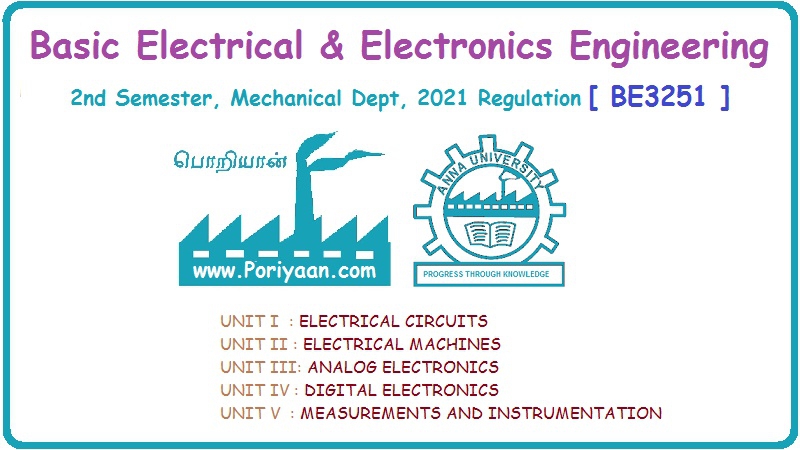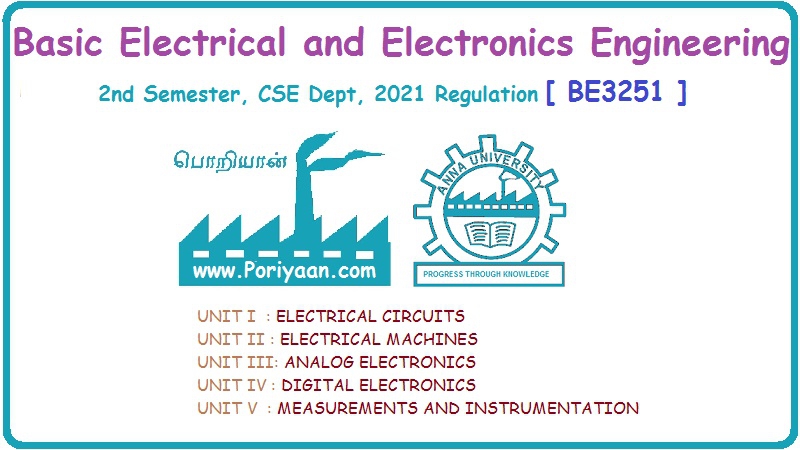Basic Electrical and Electronics Engineering: Unit II: Electrical Machines
V-Curves and Inverted V Curves of the 3-phase Synchronous Motor
When the excitation of a three phase synchronous motor taking constant power from costant voltage supply main is varied, the power factor of the motor changes.
V-CURVES
AND INVERTED V CURVES
When
the excitation of a three phase synchronous motor taking constant power from
costant voltage supply main is varied, the power factor of the motor changes.
The power drawn by a 3-phase synchronous motor is given by, P= √3 VIcosϕ where
V is the line voltage, I is the armature current and cos ϕ is the power factor.
Since input power P and supply voltage V are constant, decrease in power factor
causes increase in armature current and vice-versa.
Hence
variation in excitation or in field current causes the variation in armature
current and curves drawn between armature current and field current for
different power inputs are known as "V-curve" due to their shape
similar to english letter V. The V-curves of a syncheonous motor give relation
between armature current and field current for different power inputs. It is
shown in figure (above).
On
the other hand, if the power factor (cos ϕ) is plotted against the field
current, the graph looks like an inverted V. The family of curve obtained by
plotting power factor against field current for various conditions is known as
inverted V curves of synchronous motor as shown in figure 3.63 (b).
Figure
3.64 shows the experimental setup to obtain V-curves. Three-phase supply is
given to stator. The two wattmeter method is used to measure the input power.
Ammeter reading gives the line current where as voltmeter reading gives the
line voltage. Arheostat is used in the field circuit to adjust the excitation
to operate the motor under variable excitation.
Basic Electrical and Electronics Engineering: Unit II: Electrical Machines : Tag: : - V-Curves and Inverted V Curves of the 3-phase Synchronous Motor
Related Topics
Related Subjects
Basic Electrical and Electronics Engineering
BE3251 2nd semester Mechanical Dept | 2021 Regulation | 2nd Semester Mechanical Dept 2021 Regulation
Basic Electrical and Electronics Engineering
BE3251 2nd Semester CSE Dept 2021 | Regulation | 2nd Semester CSE Dept 2021 Regulation

